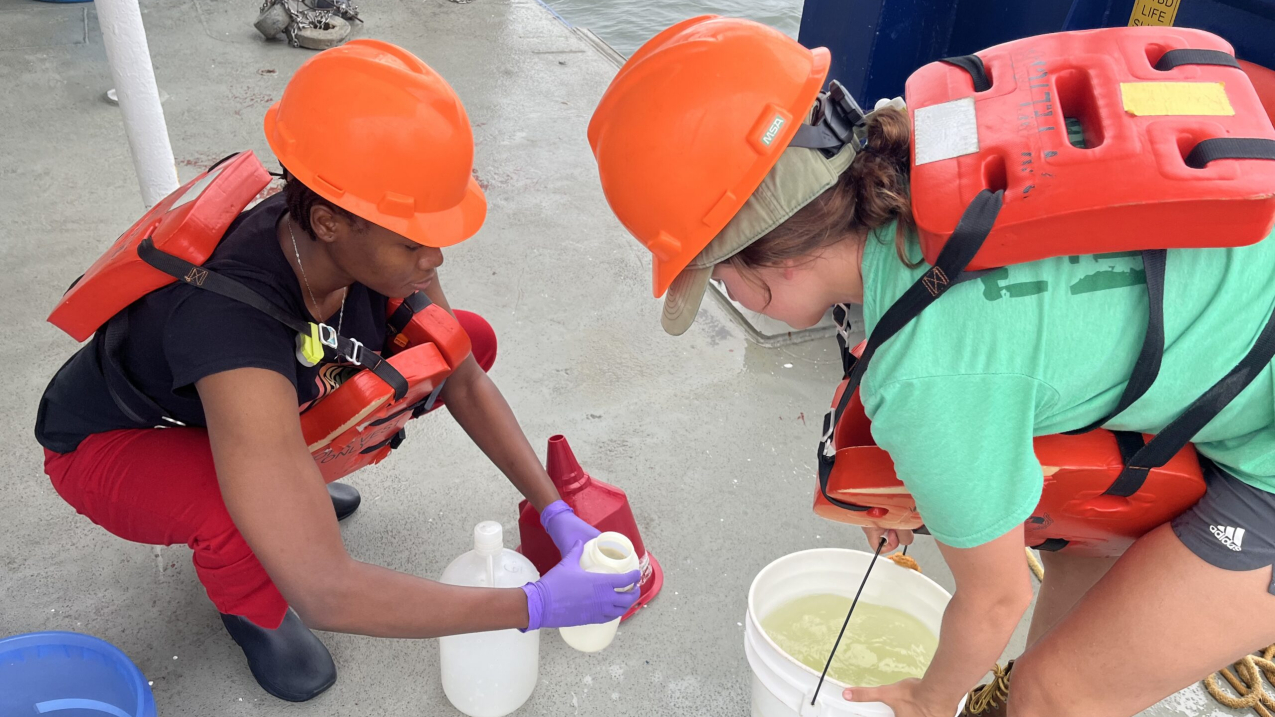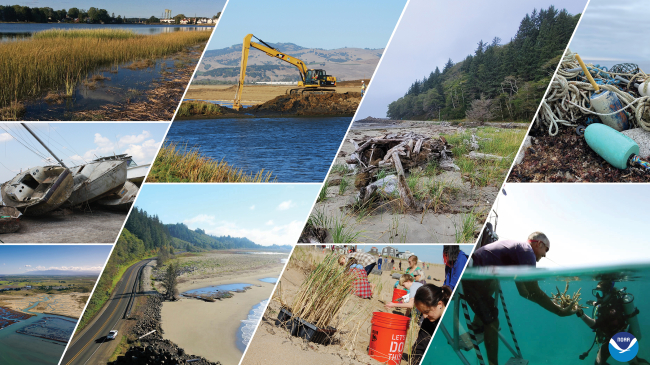
Scientists Chisom Emeghiebo and Dr. Jill Tupitza collect surface water samples aboard Research Vessel Pelican on July 17, 2024. The samples were collected as part of a NOAA-funded cruise measuring the Gulf of Mexico hypoxia "dead zone." (Image credit: LUMCON/LSU)



